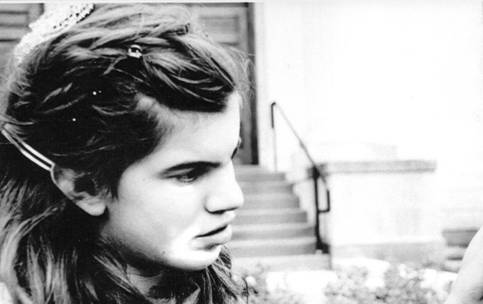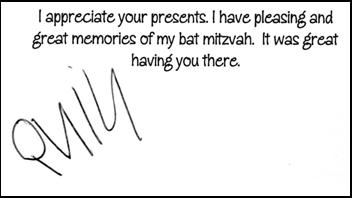
|
All of the characters and events in the novel Katie are one hundred percent figments of my imagination, with the exception of Katie herself. The title character was inspired by, and modeled after my wife’s niece, Jacquelyn “Quin” D’Elia.
Although the whole family knew that Quin had autism from an early age—which only served to make her more special in all of our hearts—with her living on the east coast, and me in Arizona, my exposure to Quin was limited to a few days a year during family events or the occasional weekend vacation visit. As a result, I never got to know her as a person, and knew almost nothing about the autism that made her who she was.
That changed when my wife and I flew back east to attend Quin’s Bat Mitzvah.
In the nine months leading up to that significant event, the family’s rabbi spent hours and hours with Quin teaching her what she would need to know on that special day. He was able to communicate back and forth with her by means of her keyboard with the help of Quin’s facilitator, Marilyn Chadwick.
Because Quin was not going to be able to communicate with the congregation in a normal way on the day of her Bat Mitzvah, her family put together a Power Point presentation that they showed during the ceremony. It included the passages of the Torah that were being read, interspersed with many of the questions that Rabbi Fellman had asked Quin over the preceding months, along with her typed responses. The effect for me, and I think most of the people there, was jaw-dropping.
Due to Quin’s inability to speak or to communicate in any other significant way with all but a few close individuals, it is very easy to assume that she probably doesn’t comprehend what is going on around her. I learned that day that nothing could be further from the truth!
Though her grammar was less than perfect, and she sometimes seemed to be expressing some random thought rather than replying to the rabbi’s question, her answers were always lucid, appropriate most of the time, and they were sometimes deep and remarkably insightful.
At one point he asked her, “What does freedom mean to you?”
She typed in reply, “To be free is a dream.”
He asked, “Are you free?”
“I need speaking to be free,” she answered.
Now, I don’t tear up easily, but that was one of those moments.
Another time he asked her, “What does it mean to you to be Jewish?”
She typed, “Love being a person of faith and love. I think love is indispensable for life.”
Love is indispensable for life. Seriously? That’s not just a reply, that’s prose. Most of the “normal” 14-year olds I know aren’t that insightful. Obviously, Quin was far more normal inside than her outward appearance hinted at. (“Normal,” it has been pointed out to me, is a setting on your clothes dryer, by the way.)
I spent the rest of that weekend observing Quin more closely than I ever had before, and I talked at length with her mother and father about her. I was completely fascinated by the hidden intellect cruelly trapped within.
The next day, the family hosted a somewhat less formal get together than the reception that followed Quin’s Bat Mitzvah. Many of her friends from the autism community were there, and I got to observe, first hand, several different levels of facilitated communication, and the everyday banter that it allowed between Quin and her “communication-challenged” friends. I was hooked.
Before the end of the four hour flight home, I had mentally outlined this novel.
Ken Blaisdell |



